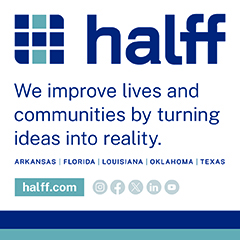Microgrids are still an underdeveloped energy strategy, according to a new report. Think Microgrid has released its 2024 State Scorecard, revealing that while some states are making incremental advances in microgrid policy and deployment, the overall landscape remains largely unchanged from 2023, with significant barriers still limiting market growth.
The scorecard, which evaluates states across five categories including deployment, policy, resilience, grid services and equity, found that no state achieved an overall “A” grade, reflecting the continued challenges in establishing microgrids as core building blocks of a modern electric grid.
Microgrids are groups of distributed energy resources that are designed to independently sustain a facility, campus or neighborhood. For example, solar modules on a home connected to a battery system that can disconnect from the grid and operate independently during a power outage would be considered a microgrid. The systems provide resilience during network outages and offer protection from price volatility.
The analysis demonstrates that most progress has occurred through limited programs focusing on utility ownership models, while broader market reforms needed to enable diverse ownership and business models remain elusive. Five states – Puerto Rico, Colorado, Connecticut, Maine and Texas – achieved “B” grades, while 14 states received “C” grades. The remaining 32 states received “D” grades.
California saw one of the most notable shifts, dropping from a “C” to “D” grade. This downgrade was driven primarily by a November 2024 California Public Utilities Commission decision that limited multi-customer microgrid opportunities to utility-owned projects, effectively constraining independent market growth.
Some states showed positive momentum. Maine improved from a ‘C’ to a ‘B’ grade, driven by regulatory processes for reviewing third-party-owned multi-customer microgrids and enhanced grid planning focused on resilience. Puerto Rico also advanced from a “C” to “B” grade through its microgrid regulation updates and emphasis on distributed energy alternatives.
The scorecard identifies several key trends shaping the microgrid landscape. Public incentives, particularly federal funding through programs like the Grid Resilience and Innovation Partnerships (GRIP), continue driving deployment. Communities are also pursuing innovative local resilience solutions, with examples like New Orleans’ faith-based organization network of microgrids.
Colorado’s recent microgrid roadmap exemplifies how states can take proactive steps toward grid modernization. Backed by $17.7 million in funding through the Department of Local Affairs Microgrids for Community Resilience Grant program, the roadmap introduces a three-tiered classification system and targets support for five high-risk regions identified through climate and socioeconomic vulnerability assessments. The program has already funded 25 planning and construction projects.
Looking ahead, Think Microgrid said that achieving the Department of Energy’s vision where distributed energy resources serve 30-50% of electricity generation by 2035 requires addressing persistent market barriers. The organization recommends policy reforms across planning, rules and incentives to enable more diverse microgrid deployment models.
The complete scorecard, which includes detailed state-by-state analysis and policy recommendations, is available through Think Microgrid’s website. The analysis was developed in partnership with Wood Mackenzie, which maintains a national microgrid database tracking market trends and deployment patterns.
Photo courtesy Lance Cpl. Christopher Johns, Public domain, via Wikimedia Commons













